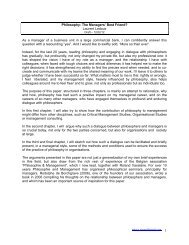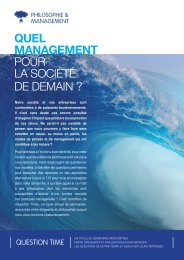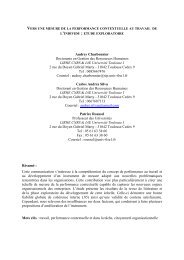The $100 billion question - Signal Lake Venture Fund
The $100 billion question - Signal Lake Venture Fund
The $100 billion question - Signal Lake Venture Fund
You also want an ePaper? Increase the reach of your titles
YUMPU automatically turns print PDFs into web optimized ePapers that Google loves.
Second, this ratings difference has increased over the sample, averaging over one notch in 2007<br />
but over three notches by 2009. In other words, actions by government during the crisis have<br />
increased the value of government support to the banks. This should come as no surprise, given<br />
the scale of intervention. Indeed, there is evidence of an up-only escalator of state support to<br />
banks dating back over the past century. 5<br />
Table 3 takes the same data and divides the sample of UK banks and building societies into<br />
“large” and “small” institutions. Unsurprisingly, the average rating difference is consistently<br />
higher for large than for small banks. <strong>The</strong> average ratings difference for large banks is up to 5<br />
notches, for small banks up to 3 notches. This is pretty tangible evidence of a second recurring<br />
phenomenon in the financial system – the “too big to fail” problem.<br />
It is possible to go one step further and translate these average ratings differences into a monetary<br />
measure of the implied fiscal subsidy to banks. This is done by mapping from ratings to the<br />
yields paid on banks’ bonds; 6 and by then scaling the yield difference by the value of each banks’<br />
ratings-sensitive liabilities. 7 <strong>The</strong> resulting money amount is an estimate of the reduction in banks’<br />
funding costs which arises from the perceived government subsidy.<br />
Table 4 shows the estimated value of that subsidy for the same sample of UK and global banks,<br />
again between 2007 and 2009. For UK banks, the average annual subsidy for the top five banks<br />
over these years was over £50 <strong>billion</strong> - roughly equal to UK banks’ annual profits prior to the<br />
crisis. At the height of the crisis, the subsidy was larger still. For the sample of global banks, the<br />
average annual subsidy for the top five banks was just less than $60 <strong>billion</strong> per year. <strong>The</strong>se are<br />
not small sums.<br />
Table 4 also splits UK banks and building societies into “Big 5”, “medium” and “small” buckets.<br />
As might be expected, the large banks account for over 90% of the total implied subsidy. On<br />
these metrics, the too-big-to-fail problem results in a real and on-going cost to the taxpayer and a<br />
real and on-going windfall for the banks. If it were ever possible to mint a coin big enough, these<br />
would be the two sides of it.<br />
<strong>The</strong>se results are no more than illustrative – for example, they make no allowance for subsidies<br />
arising on retail deposits. Nonetheless, studies using different methods have found similarly-<br />
_____________________________________________________________________________<br />
5 Haldane (2009a).<br />
6<br />
Using the end-year yield on the financial corporates bond index across the ratings spectrum.<br />
7<br />
For example, banks’ retail deposits are excluded but unsecured wholesale borrowing is included.<br />
5
















